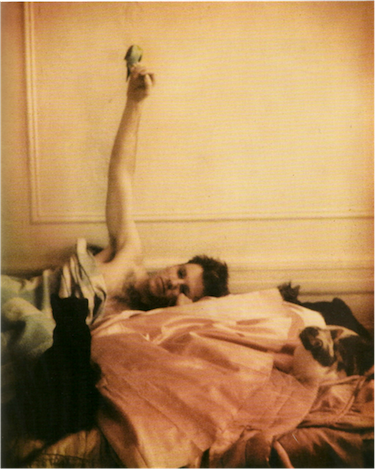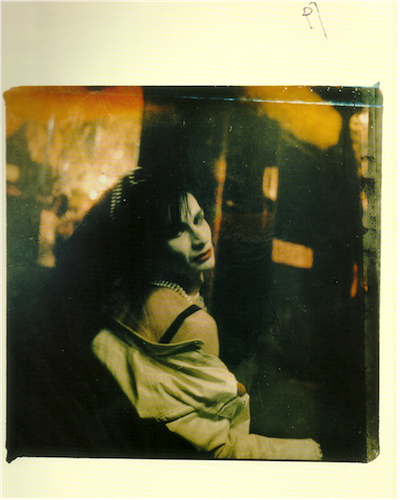Lauren Berlant’s Cruel Optimism risks thinking the utopian in ways that are both bold and revelatory. My reflections on Berlant’s already influential book open with me taking the liberty of positioning Berlant’s work alongside my own writing on utopia. It should be clear to readers of both our work that Berlant does not write under the sign of the utopian in the same way I do. But both of us do participate in traditions of theory that are engaged with the topic. Critical investments in thinking about the performative work utopia does can take different forms. On one immediate level, Cruel Optimism is about maintaining traction in our presentness, while my writing about the concrete utopian project of imaging queer futurity is an attempt to think and act beyond the pragmatic thinking that hinders minoritarian politics in the present. While Berlant and I share many interests and political attachments, I do not want to ameliorate the real differences between our positions. Berlant and I are tethered insofar as we share an interest in describing one overarching phenomenon, which is basically outlining the affective work we do to endure and sustain ourselves during cruel times where we feel the erosion of once sustaining good-life genres. In the same vein, both of us are interested in what is negotiated by different collectives and individuals who are able to perform or enact certain performances of queer temporality that unmoor us from those things that are so suffocating and damaging in life, the logics and forces that one experiences as compelled durational performances. We read and hear each other to productive ends. In Cruel Optimism, I encounter a compelling account of the strange “exuberant attachments” that keep ticking in us despite the licking (or abuse) that life at this historical juncture offers. I see a vivid account of the ways we hold on in the face of a precariousness that wears life out so that the texture of everything becomes almost too slippery to hold or too threadbare to grasp. Berlant has a great capacity to attend to the brutality that we endure in the present. Reflecting on Cruel Optimism, I can picture her hunkering down in the foxhole of the here and now, jotting down accounts of the eroding edifices and enclosures we occupy, while I am quick to scan for an exit sign in the form of a figurative futurity.
While our approaches are different, our trajectory, that of proposing a sustaining sense of the commons that may exist in the future and the present, ultimately do connect. Futurity for me is a figuration that allows people to think beyond the fraying “good life” narratives we hold onto. Cruel Optimism is a tale of being with an object in the present and allowing oneself to be changed by that object but understanding that such a transformation is not necessarily letting oneself be mastered by it, since enduring is nothing like a minimalist practice. Both approaches are moving towards a sociality that is against the odds, and participating in such an undertaking is more than “nearly utopian.” In many ways Berlant’s account of the social is saturated with the same active principle of hope that allows me to propose a figuration of the future as a mode of conceptual escapology. But the animating force of my queer utopia is a turn to what Ernst Bloch would call the not-yet-conscious or the-no-yet-here. Such brazen longing can definitely feel like an avoidance of the present and it might also be symptomatic of a kind of cruel optimism in that, as Bloch explains, utopia is always disappointed. The introduction to Cruel Optimism demarcates that book’s difference from my project by saying that in Cruising Utopia I ultimately refer to the present as a prison. The “prison house of the here and now” I reference was a metaphor for the ways in which we live in a present that does not let us think otherwise through its insidious and outright self-referentiality. The Marxist in me looks at Berlant’s idea of cruel optimism as an opportunity for auto-examination. I am interested in tracking a certain kind of potentiality during moments of what she might call suspension or the impasse of living in the overwhelmingly present moment. To this end, I think the practice of queer utopianism can be tempered by the phenomenon that Berlant unfolds as cruel optimism. The mode of optimism articulated in her work isn’t just normative optimism with its vague futurities. What Berlant describes as the vague futurities of normative affect is what I, after Bloch, describe as the category of an abstract utopian thinking. Abstract Utopian thinking falters precisely because of its over-arching vagueness, its refusal to image structural transformation. A more concrete utopianism should participate in a calculus that thinks the here and now along with the then and there, and indeed this mode of contemplation might enable us to live with and beyond the “cruelty of the object” that Berlant so vividly renders.
In Minima Moralia, Adorno makes the point that “Wrong life can not be lived rightly.” Cruel Optimism is a very persuasive elaboration on how so many of us have no choice but to attempt to live this “wrong life” in the right way, and how fraught and difficult such efforts are. Berlant’s is a self-described “structural” account; Cruel Optimism sheds light on the life we live everyday, one that Berlant describes as no longer organized but indeed disorganized by capitalism, which may in fact be the wrong life we try and fail to live rightly. Attempting to live the “wrong life” rightly might be useful shorthand for describing the ultimate drama at the heart of Cruel Optimism.
Berlant describes her approach to cultural analysis as “delaminating” the specific in an effort to make an argument that is generalized yet that nonetheless resonates with multiple scenes of the specific. In that spirit, I will lend my attention to an artist whose work I find to be particularly evocative, in an attempt to add a visual level to this somewhat abstracted exercise in comparing and contrasting cruel optimism with an idea of a concrete queer utopianism. Mark Morrisroe emerged from Boston’s punk Bohemia of the 1980’s. He is often discussed as being part of the Boston School that also included Nan Goldin, David Armstrong, and Jack Pierson. This crew of young artists worked together, posed for each other and developed styles that elevated the snapshot and the Polaroid to new heights, especially in relation to the hard work of rendering an image of the often-romanticized lowlife that these young artists lived. Morriroe is perhaps most famous for his “sandwich prints.” Morrisroe’s prints sandwiched together black and white and color negatives of the same image, producing a visual texture that is often weird and dense. His process begins with him taking a color photo, rephotographing the image in black and white, and sandwiching or superimposing them to produce prints. This layering of negatives displays the ways that two images are never the same. Photography’s fragile technological claims to a “more real” representation of the world are shot down in Morrisoe’s work. The layering of images leads to a hazy and saturated color field and an exaggeration of shadowing. Small and often domestic images of the intimate or quotidian achieve an amplified melodrama. A pin pierces a helpless ant and the contrast achieved by the sandwich-print procedure leaves a heavy shadow.
The image of a boy next door is conveyed in a ghostly realm between color and non-color and the dramatic shading collides with a ribbon of light that seems to trail him. Another image shows the artist wearing a pale white wig, flanked by a shadowy friend and the bright blue wig that waits for him from a bureau top. His drag isn’t from the eighties but from another historical moment that beckons, hinting at a story of gay men in the eighties turning to the quotidian costuming of the 50s and 60s, a story that suggests how objects from a past, ones that may have been toxic, are snatched out of what was once at best a melancholic present and is now a haunted past. In one of his most famous images the spectator encounters Morrisroe’s then lover Pierson, his outstretched arms lethargically hanging in the air, seemingly having emerged from a billowy pink bed (see top image). A vulnerable parakeet sits perched on Pierson’s hand and the viewer encounters the strange domestic drama of the black housecat sitting mesmerized as it gazes at the bird. In another famous self-portrait Morrisoe is in persona as one of his drag characters Sweet Raspberry.
In relatively sharp focus he looks back at the camera, his head slanted, a jacket falling over the shoulder, face pearls receding into the larger lagoon of shadows that include his dark wig and enfold it. In this image we find a typically saturated blurry background, offering us a sense of what it means to have one’s queerness draw out of normative time and place.
There is a kind of longing in Morrisroe’s images that is startling in its familiarity. This is to suggest that there is an affective charge in these photographs that quickly progress from the specific to the general only to circulate across various resonate scenes of particularity. Morrisroe’s images are documents or renderings of specific and generalizable cruel optimism in the face of a harsh and painful life. Which is to say that the sweet and sad object world of Morrisoe’s photography can be simultaneously read as lush images of people, animals and objects surviving our “compromised ordinariness.” Morrisoe’s pictures visualize an affective world that is an emotional shift from a more realist photographic aesthetic. Berlant and I are invested in Adorno’s idea of an aesthetic that can suggest the otherwise. The otherwise of sex, gender and class reality that is encountered in Morrisoe is not change unto itself, it’s not automatic transformation. Instead, it’s potentially a part of a bigger story that I think a few of us are trying to tell. It is not about the speedy arrival at a “better” or reconstitutes good life that the aesthetic offers us but it is instead about the affective resources for otherwiseness that exists both in the realms of the aesthetic and the quotidian.




